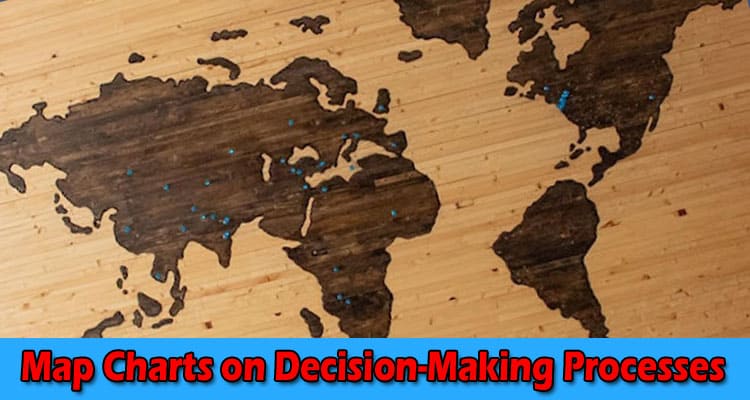It’s difficult to argue with visual data representation when it comes to decision-making. Visuals like graphs and charts enable data comprehension at a glance, which spurs quick and informed management decisions. In the vast field of visual data representation, a map chart has carved a niche for itself due to its unique capabilities and flexibility. In this article, we will dive deep into the subject matter analyzing how map charts can impact organizational decision-making processes.
Table of Contents
Understanding the Basics of Map Charts
Map charts serve as a premier tool in the world of data visualization, primarily for geographical data representation. These charts are not just simple maps but are a tool designed to visualize data outcomes effectively in a geographic context. They leverage locales and geography as a framework for understanding and interpreting the data. This alignment of data with geography can offer powerful insights, which can be crucial in decision-making processes across different genres of organizations such as businesses or government offices.
Map charts come in various forms, including heat maps, choropleth maps, bubble maps, and many more, each serving a specific purpose, but with a common goal of facilitating data comprehension. For instance, a heat map could be employed to indicate the population density across different regions, whereas a choropleth map may represent different electoral constituencies colored based on the political party in power.
The Growing Importance of Map Charts in Business Intelligence
In today’s data-driven world, businesses continuously gather a vast amount of data that could be used for strategic planning and decision making. However, processing and interpreting this enormous amount of data could be challenging—this is where map charts come into the picture. They are like a boon to business intelligence and data analytics.
Map charts enable decision-makers to visualize patterns and trends hidden in the raw data at a glance. For instance, a company wishing to expand its operations may use a map chart to identify areas where similar businesses have recorded higher sales. This visualization would make the decision-making process more effective and efficient.
Enhancing Decision-Making Processes With Map Charts
One of the biggest advantages of map-based visuals is the way they can simplify complex data sets. Intricate data, spread across rows and columns of spreadsheets, often run the risk of being misunderstood or overlooked. However, with map charts, the same data can be presented in a more digestible format, leading to quicker comprehension and decision-making.
Additionally, map charts can be efficient tools to drive organizational alignment. People across different hierarchies can interact with these interactive charts and generate insights that align with company objectives. Consider a scenario where a sales manager and a supply chain executive are both looking at a map chart showing product demand across various regions—they can derive insights in accordance with their specific roles and contribute to decision-making.
Map charts can also bolster informed decision-making in crisis management. With their ability to provide a comprehensive geographic overview, it’s feasible to identify hotspots that require immediate attention. For instance, during a supply chain disruption, a map chart can help identify alternative routes or suppliers, thus ensuring business continuity.
Choosing the Right Map Chart for Effective Decision-Making
Map charts come in various forms, and so do their applications in decision-making processes. Therefore, choosing the right map chart is critical to maximizing the benefits. The decision on the type of chart to use should be driven by the nature of the data and the insights sought from it.
For instance, if an organization wants to represent data related to percentage change in sales across different regions, a choropleth map would be apt. On the other hand, to visualize the density of customers in various locations, a heat map could serve the purpose.
Moreover, the selection process should also consider the target audience. The chart must be simple enough for the audience to interpret without any complexities. It should be open for interaction, enabling the audience to drill down the datasets, ask questions, and uncover answers, thereby contributing to informed decision-making.
In conclusion, map charts can make decision-making more collaborative, data-driven, and proactive. It is indeed an investable area for organizations seeking to harness the true potential of their data and drive decision-making based on factual, rather than anecdotal or hypothetical, information.


